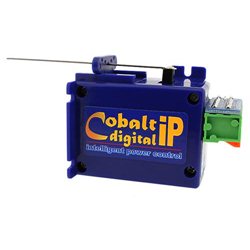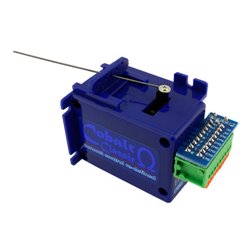There are a number of different options for attaching figures such as a horse and rider to a layout. Perhaps the...
No products
Product successfully added to your shopping cart
There are 0 items in your cart. There is 1 item in your cart.
Search Tips
What advantages would a slower-acting point motor offer to my layout ?
When it comes to model railways, the choice of point motors can greatly impact the performance and realism of a layout. While there are various types of point motors available, including both slow and fast-acting ones, slower-acting point motors have their own set of advantages.
Let's explore some of these advantages:
- Realistic movement : slower acting point motors provide a more realistic movement for your model trains. They mimic the gradual and smooth motion of real-life railway switches, allowing trains to navigate through the points in a more lifelike manner. This can greatly enhance the overall authenticity and enjoyment of a layout.
- Reduced wear and tear : the slower speed of a point motor can help reduce wear and tear on the mechanical components of the layout. When a point motor operates too quickly, it can cause sudden jolts and jerks in the track, potentially leading to damage over time. Slower-acting motors provide a gentler transition, minimizing the risk of accidents or damage to the track and rolling stock.
- Improved reliability : slower acting point motors often have a higher level of reliability compared to their faster counterparts. Their slower speed allows for more precise control and reduces the chances of misalignment or derailments. This can be particularly beneficial in complex layouts with multiple points and intricate track configurations.
- Compatibility with DCC systems : slower acting point motors are generally more compatible with Digital Command Control (DCC) systems. DCC allows for individual control of multiple trains and accessories on a layout and slower motors integrate well with the precise control capabilities of DCC systems. This can enhance the overall efficiency and functionality of the layout.
The choice of point motor will depend on the personal preferences of the modeller and the specific requirements of the layout. While slower-acting point motors offer specific advantages, faster-acting motors may be more suitable for certain situations, such as the simulation of high-speed mainline tracks or rapid switching operations.
Click here to receive the tips weekly in your mailbox. You can unsubscribe at any time.










